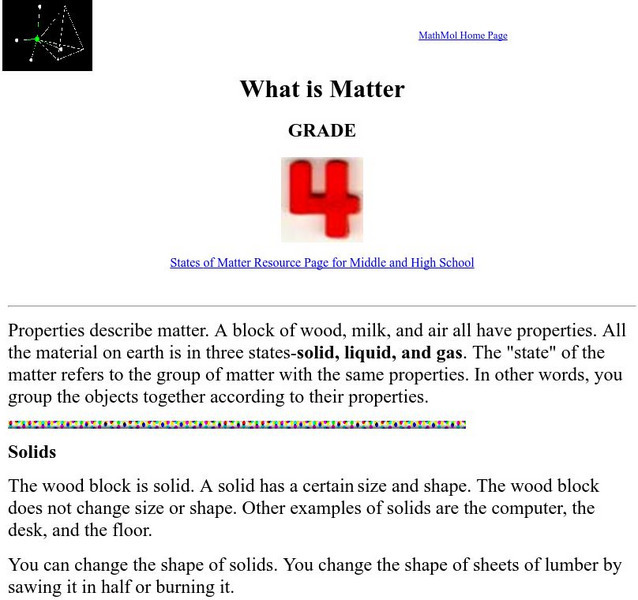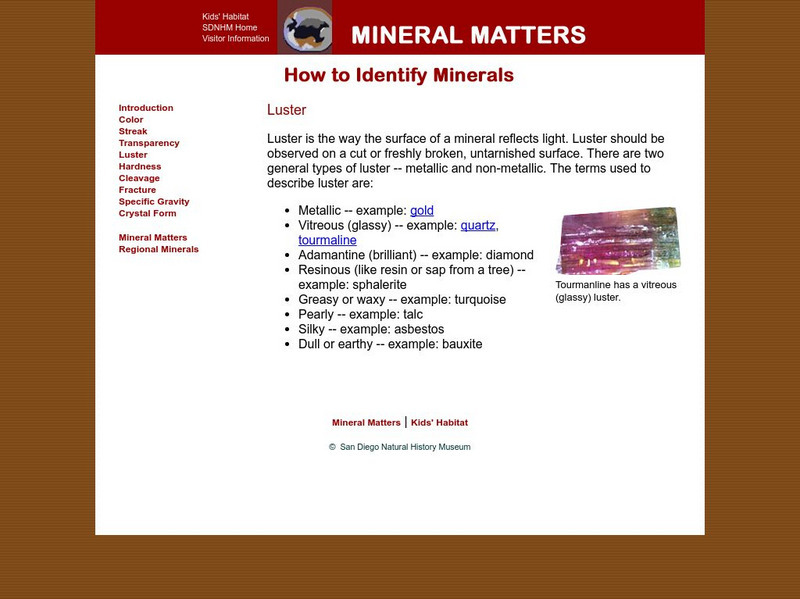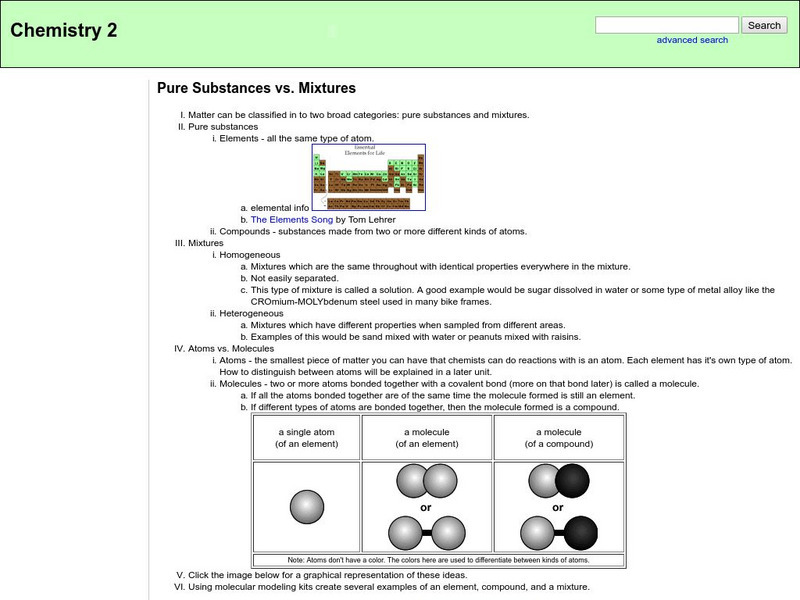Hi, what do you want to do?
Science Education Resource Center at Carleton College
Serc: Polymers & Plastics: Classification & Models
Young scholars will use their prior knowledge about changes of matter including physical and chemical changes to examine and categorize various types of plastics (polymers). They will identify how their chemical properties allow them to...
E-learning for Kids
E Learning for Kids: Science: North Sea: Netherlands: What Is It Made Of?
Finn is joining his father on their boat. Join them and help Finn sort materials based on their properties.
University of Southern California
Structure of Matter: Animals
A slide show that demonstrates the development of physical structure in the animal world, moving from sponges through mammals.
ClassFlow
Class Flow: What Is Matter?
[Free Registration/Login Required] Discover the composition of matter and the relationship between matter, atoms, and elements. Students will learn the differences between elements and compounds, and how molecules are formed. Chemical...
New York University
New York University: States of Water
Use this resource to learn about the three different phases of water; solid, liquid, and gas. What happens to water as it changes into a solid or gas? Includes short and easy to do activity.
NASA
Nasa: Imagine the Universe: Dark Matter
Site provides an introduction to dark matter and what it really is. Provides links to a quiz as well as facts about dark matter. Offers links to additional resources as well as related topics.
New York University
New York University: What Is Matter?
At this resource discover the difference between solids, liquids, and gases. Practice what you just learned with included review questions.
Other
English Montreal School: Chemical vs. Physical Changes: Elements vs. Compounds
A laboratory experiment where students classify matter into a homogenous mixture, heterogeneous mixture, solution, or pure substance. Also students will test for physical and chemical changes.
Center for Educational Technologies
Wheeling Jesuit University: How Are Things Divided Among Earth's Four Spheres?
See if you can classify various objects in the categories of land, water, air or living thing. This activity is interactive and you will receive a score for your performance.
E-learning for Kids
E Learning for Kids: Science: North Sea: How Do We Choose Materials to Make Objects?
Help Emilie keep the winery stable and sturdy. Join her to learn about different materials and their properties.
San Diego Natural History Museum
San Diego Natural History Museum: Mineral Matters: Luster
A brief introduction to identifying a mineral by its luster. Examples of terms used to describe luster, such as metallic, glassy, and dull are listed.
Other
Chemsite: Pure Substances vs. Mixtures
An outline on the topics of pure substances and mixtures.
Beacon Learning Center
Beacon Learning Center: Packing for the Park
Understand how items are group based on different characteristics through this learning activity.
E-learning for Kids
E Learning for Kids: Science: Scotland: How Can We Group Non Living Things Based on Characteristics/purposes?
Montgomery is a true Scot, and even wears a kilt. He works in his dad's store and needs help learning about materials.
Wonderville Media
Wonderville: Fish
You cannot "pet" a fish, but it is good company. You can watch it swim and play. You can talk to it, even if it won't talk back. Some fish react to a friendly voice or face! There are many kinds of fish. No matter what kind you have,...
Wonderville Media
Wonderville: Hamsters
Do you have a hamster? There are several different kinds of hamsters. No matter what kind you have, your hamster has needs. Now it is your job to meet your pet's needs! Learn more about Hamsters in this well-constructed overview by...
Wonderville Media
Wonderville: Birds
Congratulations! You have a new pet bird. Maybe it's a tiny parakeet. Maybe it's a bigger cockatiel or parrot. No matter what kind of bird you have, it has needs. And now it is up to you to meet your pet's needs! Learn more about Birds...



















